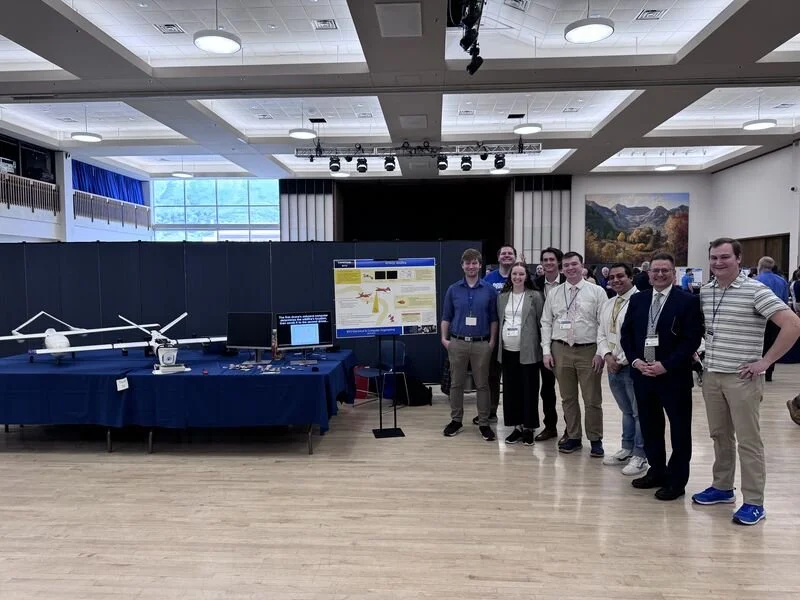Exploring the boundaries of engineering & design
Discover the dangers of overfitting in engineering design and everyday life! From "lucky" paperclips and Thanos's flawed logic to Clippy's demise, learn how optimizing too narrowly can lead to unexpected failures. Mark McDonald reveals why robust solutions require simplification and real-world validation, avoiding the perils of over-optimization.
Ansel Adams's iconic landscapes weren't just pretty pictures; they were masterworks of design. This article reveals how Adams's revolutionary principles—from empathy to composition and vision-driven innovation—offer invaluable lessons for engineers seeking to craft impactful solutions.
Explore the science and engineering behind captivating fireworks displays. From their historical origins to cutting-edge innovations, learn how customizable shells create the brilliant colors, sounds, and patterns that light up our celebrations.
Journey to Cambodia with Dr. John Salmon to discover the krama, a traditional Cambodian scarf, and its surprising versatility. Learn how this single item, rich in cultural meaning, offers a variety of practical uses, from sun protection to carrying essentials. Explore how the power of design blends beauty, meaning, and utility.
BYU's Capstone Program reveals how thoughtful design transforms ideas into impactful realities. Learn 14 principles for product designers to create solutions that exceed expectations, from decoding customer needs and embracing systems thinking to iterating early, guarding against scope creep, and designing for manufacturability.
BYU engineering seniors gain real-world experience in Capstone, guided by experienced engineers like Darrell Goff. He stresses that understanding user needs first is paramount, preventing wasted effort. Effective brainstorming, iterative design, and a resilient team dynamic are also crucial for success, ensuring students create innovative, user-focused solutions and prepare for future careers.
Flight! People have wondered about it since the beginning of time. Paul MacCready was one of those people deeply interested in flight. What follows is a story of Paul MacCready, and what we can learn from him in the engineering design process.
If you’re like me, you might find yourself yearning to be a better designer but not sure where to start! I’d like to share with you some mindsets and actionable exercises we can use to grow in our design strength.
Learn from Dr. David Parsi, a mechanical engineering Ph.D. from Brigham Young University, as he discusses his research on overcoming technical challenges in reconfigurable radio frequency instruments. He emphasizes core engineering principles such as intuition, strategic experimentation, and efficient research methodologies. Dr. Parsi's journey showcases how interdisciplinary training and a problem-solving mindset can lead to significant advancements.
Natural problems make your work challenging—and valuable. But many of the headaches in engineering and design come from mistakes we create ourselves. In this article, Dr. Chris Mattson shares how to spot and eliminate self-induced problems to work smarter, not harder.

Written with accessibility in mind so that design enthusiasts of all types can benefit from the topics, including students, professionals, entrepreneurs, innovators, or anyone else interested in engineering design.
Discover the dangers of overfitting in engineering design and everyday life! From "lucky" paperclips and Thanos's flawed logic to Clippy's demise, learn how optimizing too narrowly can lead to unexpected failures. Mark McDonald reveals why robust solutions require simplification and real-world validation, avoiding the perils of over-optimization.
Ansel Adams's iconic landscapes weren't just pretty pictures; they were masterworks of design. This article reveals how Adams's revolutionary principles—from empathy to composition and vision-driven innovation—offer invaluable lessons for engineers seeking to craft impactful solutions.
Explore the science and engineering behind captivating fireworks displays. From their historical origins to cutting-edge innovations, learn how customizable shells create the brilliant colors, sounds, and patterns that light up our celebrations.
Journey to Cambodia with Dr. John Salmon to discover the krama, a traditional Cambodian scarf, and its surprising versatility. Learn how this single item, rich in cultural meaning, offers a variety of practical uses, from sun protection to carrying essentials. Explore how the power of design blends beauty, meaning, and utility.
BYU's Capstone Program reveals how thoughtful design transforms ideas into impactful realities. Learn 14 principles for product designers to create solutions that exceed expectations, from decoding customer needs and embracing systems thinking to iterating early, guarding against scope creep, and designing for manufacturability.
BYU engineering seniors gain real-world experience in Capstone, guided by experienced engineers like Darrell Goff. He stresses that understanding user needs first is paramount, preventing wasted effort. Effective brainstorming, iterative design, and a resilient team dynamic are also crucial for success, ensuring students create innovative, user-focused solutions and prepare for future careers.
Flight! People have wondered about it since the beginning of time. Paul MacCready was one of those people deeply interested in flight. What follows is a story of Paul MacCready, and what we can learn from him in the engineering design process.
If you’re like me, you might find yourself yearning to be a better designer but not sure where to start! I’d like to share with you some mindsets and actionable exercises we can use to grow in our design strength.
Learn from Dr. David Parsi, a mechanical engineering Ph.D. from Brigham Young University, as he discusses his research on overcoming technical challenges in reconfigurable radio frequency instruments. He emphasizes core engineering principles such as intuition, strategic experimentation, and efficient research methodologies. Dr. Parsi's journey showcases how interdisciplinary training and a problem-solving mindset can lead to significant advancements.
Natural problems make your work challenging—and valuable. But many of the headaches in engineering and design come from mistakes we create ourselves. In this article, Dr. Chris Mattson shares how to spot and eliminate self-induced problems to work smarter, not harder.
Discover the dangers of overfitting in engineering design and everyday life! From "lucky" paperclips and Thanos's flawed logic to Clippy's demise, learn how optimizing too narrowly can lead to unexpected failures. Mark McDonald reveals why robust solutions require simplification and real-world validation, avoiding the perils of over-optimization.
Ansel Adams's iconic landscapes weren't just pretty pictures; they were masterworks of design. This article reveals how Adams's revolutionary principles—from empathy to composition and vision-driven innovation—offer invaluable lessons for engineers seeking to craft impactful solutions.
Explore the science and engineering behind captivating fireworks displays. From their historical origins to cutting-edge innovations, learn how customizable shells create the brilliant colors, sounds, and patterns that light up our celebrations.
Journey to Cambodia with Dr. John Salmon to discover the krama, a traditional Cambodian scarf, and its surprising versatility. Learn how this single item, rich in cultural meaning, offers a variety of practical uses, from sun protection to carrying essentials. Explore how the power of design blends beauty, meaning, and utility.
BYU's Capstone Program reveals how thoughtful design transforms ideas into impactful realities. Learn 14 principles for product designers to create solutions that exceed expectations, from decoding customer needs and embracing systems thinking to iterating early, guarding against scope creep, and designing for manufacturability.
BYU engineering seniors gain real-world experience in Capstone, guided by experienced engineers like Darrell Goff. He stresses that understanding user needs first is paramount, preventing wasted effort. Effective brainstorming, iterative design, and a resilient team dynamic are also crucial for success, ensuring students create innovative, user-focused solutions and prepare for future careers.
Flight! People have wondered about it since the beginning of time. Paul MacCready was one of those people deeply interested in flight. What follows is a story of Paul MacCready, and what we can learn from him in the engineering design process.
If you’re like me, you might find yourself yearning to be a better designer but not sure where to start! I’d like to share with you some mindsets and actionable exercises we can use to grow in our design strength.
Learn from Dr. David Parsi, a mechanical engineering Ph.D. from Brigham Young University, as he discusses his research on overcoming technical challenges in reconfigurable radio frequency instruments. He emphasizes core engineering principles such as intuition, strategic experimentation, and efficient research methodologies. Dr. Parsi's journey showcases how interdisciplinary training and a problem-solving mindset can lead to significant advancements.
Natural problems make your work challenging—and valuable. But many of the headaches in engineering and design come from mistakes we create ourselves. In this article, Dr. Chris Mattson shares how to spot and eliminate self-induced problems to work smarter, not harder.
Learn from Dr. David Parsi, a mechanical engineering Ph.D. from Brigham Young University, as he discusses his research on overcoming technical challenges in reconfigurable radio frequency instruments. He emphasizes core engineering principles such as intuition, strategic experimentation, and efficient research methodologies. Dr. Parsi's journey showcases how interdisciplinary training and a problem-solving mindset can lead to significant advancements.
We’re celebrating the BDR’s third birthday this month! We want to introduce this year’s BDR team, and we’ve asked everyone to share some thoughts or advice for this upcoming school year. Best of luck with your studies, projects, and everything in between!
Alfa, Bravo, Charlie, Delta, Echo… this is the NATO phonetic alphabet. What made this design so enduring that it survived the analog age, and the onset and proliferation of the digital age? Why was this design so universal that it is used throughout the world with only minor regional adaptations?
Welcome to Autumn! The Fall is the season for trees changing their colors, warmer jackets, and career fairs. Don’t miss out on learning about, and preparing for, an important step that can set you up for an amazing career.
Changes in our systems must happen everywhere, across all industries, and I believe engineers and designers have an important role and responsibility in the U.S’ plight against injustices.
Commodo cursus magna, vel scelerisque nisl consectetur et. Donec id elit non mi porta gravida at eget metus.
Lorem ipsum dolor sit amet, consectetur adipiscing elit. Vestibulum id ligula porta felis euismod semper.
Quisque iaculis facilisis lacinia. Mauris euismod pellentesque tellus sit amet mollis.
Sed purus sem, scelerisque ac rhoncus eget, porttitor nec odio. Lorem ipsum dolor sit amet.
Vivamus pellentesque vitae neque at vestibulum. Donec efficitur mollis dui vel pharetra.
Praesent id libero id metus varius consectetur ac eget diam. Nulla felis nunc, consequat laoreet lacus id.
Donec id justo non metus auctor commodo ut quis enim. Mauris fringilla dolor vel condimentum imperdiet.
Commodo cursus magna, vel scelerisque nisl consectetur et. Donec id elit non mi porta gravida at eget metus.
Lorem ipsum dolor sit amet, consectetur adipiscing elit. Vestibulum id ligula porta felis euismod semper.
Quisque iaculis facilisis lacinia. Mauris euismod pellentesque tellus sit amet mollis.






















